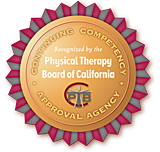
Learning The Method
MNRI® Proprioceptive and Cognitive Integration
Course Objectives:
Participants of this MNRI ® course will attend all 24 hours and satisfactorily participate in both the course discussion and hands-on supervised practice. In the course, participants will be introduced to the information about the links between proprioceptive and cognitive systems, about priority role of proprioceptive-vestibular system for creating the basis for establishing gravity, grounding, and stability for the optimal work of cognitive functions. They will be presented to procedures of Assessment for primary reflex patterns that serve the development and maturation of the proprioceptive and vestibular systems, and also Re-patterning techniques and exercises for these reflex patterns necessary to create a sufficient neurophysiological basis for the development of different cognitive skills – visual and auditory, and analytical-synthesizing (generalizing). Development and maturation of the group of reflexes concerned with proprioceptive-vestibular system lead to a possibility for the development of conscious postural and motor control is the basis for the development of links between motor coordination and cognitive inner control. This workshop will offer examples of techniques, games, and activities to make the integration sessions using the MNRI ® exercises interesting and motivating for children. The Proprioceptive-Cognitive Integration course can be used with children and adults with developmental deficits; motor and speech delays; space-time disorientation, decoding and modeling, and manual “mapping” problems; and, as a stress release program for professionals who used to intellectual intense work. Course participants will also learn about the assessment of primary and natural movements and reflexes, as well as, specific exercises to integrate neurodevelopment delays.
Learning Objectives: MNRI® Proprioceptive and Cognitive Integration
-
Develop knowledge of the Neurosensorimotor Reflex Integration basis for the successful development of proprioceptive and cognitive systems.
-
Explain the proprioceptive-cognitive actual links in children with challenges and create the Anchors based on natural innate mechanisms of neurodevelopment and neuroplasticity. Explore the rules and basis for creating these proprioceptive-cognitive anchors.
-
Explain the following reflexes and their specific involvement in development of Antigravity mechanisms and Cognitive skills: Labyrinthine Tonic in Flexion and Extension, Core Tendon Guard in Flexion and Extension, Gravity, Balancing, Grounding, Stability, Head Righting Ocular and Labyrinthine, Ocular-Vestibular, Ocular- Kinetic, Hands Pulling, Hands supporting, Sequential Rolling and Spinning and some others.
-
Explain the following reflexes and their specific involvement in the development of Antigravity mechanisms and “leveling reflexes”: Eye Leveling, Vestibular Leveling, TMJ Leveling, Auditory system Leveling.
-
Describe how these reflexes are involved in muscular-tendon-ligaments tone regulation, postural control, and antigravity abilities.
-
Describe how these reflexes are involved in conscious motor control formation within the brain-body system.
-
Explain the basis for the development of proprioceptive-cognitive anchors and fine motor coordination and self-regulation and self-management.
-
Summarize the basis for the formation of primary links of proprioceptive and cognitive coordination: “Acoustic activation-kinesthetic memory”, “Balancing-Acoustic stimulation-Moro response-selective memory activation”. Facilitation of “Analytical” and “Synthesized” auditory perception and processing using developmental potentials of proprioceptive-vestibular reflex patterns.
-
Explain the basis for the formation of proprioceptive-cognitive coordination and the fine motor skills” “Acoustic differentiation-memory anchoring”, “Hands-eyes”, “Hands-auditory-articulation system, and “auditory-vestibular system”.
-
Show examples of games and activities to enhance the MNRI ® process integration exercises in an interesting and motivating manner.
-
Explain the correlation of proprioceptive-vestibular reflex patterns and skills of cognitive perception. Memorizing, writing, reading and calculation.
-
Explain how to conduct assessments using this MNRI ® program to discover nonintegrated or immature reflex patterns creating the antigravity mechanism and supplying the neurophysiological basis for proprioceptive-cognitive functions.
-
Describe individual programs using this MNRI ® program to re-pattern, activate and integrate these reflex patterns.
-
Explain and demonstrate specific techniques for dysfunctional and pathological reflex patterns
-
Describe the possibilities for positive changes in body structure, posture and movement development through Integration of proprioceptive-vestibular reflex patterns
-
Apply this MNRI ® program to develop individual corrective programs based on assessment techniques and exercises for integration of given reflexes to enhance overall emotional, motivational and motor challenges.
-
Demonstrate the appropriate application of the structural integration of reflex patterns referring to the group of proprioceptive-vestibular ones in a supervised situation.
-
Evaluate and develop appropriate strategies to incorporate the use of the Proprioceptive-Cognitive Integration Program in their daily practice.
Agenda-
Day 1:
Hour 1: Movement as the basis of Natural Development
Hours 2-3: Masgutova Method® and its relationship to development
Hour 4: Neurosensorimotor Reflex Integration basis for the successful development of proprioceptive and cognitive systems
Lunch 1 hour
Hour 5-6: Body Motor Coordination Systems and Brain Levels
Hour 7-8: MNRI™ Reflex Assessment of Procedures
Day 2:
Hour 1: Right/left motor coordination system
Hours 2-3: The brain and proprioceptive and cognitive integration
Hour 4: Upper extremity functions for the development of self-regulation
Lunch 1 hour
Hours 5-6: Balance and Attention
Hours 7-8: Reflexes
Day 3:
Hour 1: Reflexes and MCS
Hour 2-3: Reflexes and visual and auditory processing
Hour 4: Reflexes involved in conscious motor control
Lunch 1 hour
Hour 5-6: The basis for the formation of primary links of proprioceptive and cognitive coordination
Hour 7: Demonstrate techniques
Hour 8: Summarize course and apply the techniques




